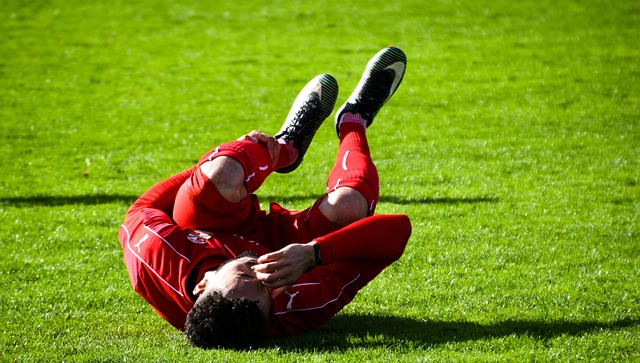Sports are a huge part of American culture. From little league to the pros, people of all ages love to compete and watch athletes perform at the highest level.  And while sports can be a great way to stay healthy and have fun, they also come with the risk of injuries. In fact, according to the Centers for Disease Control and Prevention (CDC), “more than three million children under age 18 are treated in U.S. hospital emergency departments each year for sports- and recreation-related injuries.”
And while sports can be a great way to stay healthy and have fun, they also come with the risk of injuries. In fact, according to the Centers for Disease Control and Prevention (CDC), “more than three million children under age 18 are treated in U.S. hospital emergency departments each year for sports- and recreation-related injuries.”
That’s a lot of kids. So if your child is one of them, you’ll want to know how to help them recover quickly and safely. Here are some tips to keep in mind.
1. Seek the Help of a Physical Therapist
If your child’s injury is more severe or requires a longer recovery period, it may be helpful to seek the help of a physical therapist. A physical therapist at med1caretherapypartners.org can provide your child with targeted exercises and other strategies that will help them to restore strength and mobility in their injured body part as quickly as possible. The sooner you seek help from a physical therapist, the sooner your child can start on the road to recovery.
To find a qualified physical therapist in your area, ask your doctor for a recommendation, or do some research online to find one with the right experience and credentials. And remember, it is always important to listen to the advice and recommendations of your healthcare provider when dealing with an injury.
2. Pay Attention to Any Warning Signs or Symptoms
Regarding sports-related injuries, it is especially important to be aware of any potential problems, and seeking professional guidance from experts in sports podiatry can be a crucial step in addressing them effectively. To help your child recover quickly and safely, you must be aware of any warning signs or symptoms that may indicate a more serious injury. Some common warning signs or symptoms that may indicate a more serious injury include:
- Pain that does not go away after a few days
- Swelling or bruising that does not go away after a few days
- Inability to move the injured body part
- Numbness or tingling in the injured body part
If you notice any of these signs or symptoms in your child, seek medical attention immediately.
3. Ice the Affected Area
Icing is one of the most effective ways to reduce swelling and inflammation after an injury. It can also help to numb the area and reduce pain. When icing an injured area, you want to ensure that you are using a cold pack designed for this purpose. You should never use ice directly from the freezer, as it can cause damage to the skin.
The best way to ice an injured area is to place a cold pack on it for about 20 minutes. Then, take a break for about 10 minutes before repeating the process. You should continue to do this until the swelling and inflammation decrease.
4. Manage Any Pain With Over-the-Counter Medications
Several over-the-counter (OTC) pain medications can help relieve some discomforts when treating injuries. Options like ibuprofen, aspirin, and acetaminophen are effective at reducing pain in sports-related injuries
If you are concerned about using OTC pain medications in your child, talk to your doctor or a pediatrician before giving them to your child. They can help guide you on how much and when these medications are appropriate for use.
5. Make Sure Your Child Stays Hydrated
Another key factor in helping your child recover from a sports injury is ensuring they are well-hydrated. This is especially important in the days following an injury when your child’s body will need extra water to help speed up the healing process and strengthen their immune system.
You can encourage your child to stay hydrated by providing plenty of cool water throughout the day. If they need extra incentive, consider adding a slice of lemon or cucumber to their water to make it more flavorful.
6. Provide Them With a Well-Balanced Diet
In addition to staying hydrated, it is also important that your child eats a well-balanced diet in the days following their injury. A nutritious, balanced diet will help to provide them with the nutrients and energy they need to heal quickly and avoid any additional complications.
Some key foods to include in your child’s diet after a sports injury include fruits, vegetables, whole grains, lean proteins, and healthy fats like avocados or olive oil. If you have questions about what diet is best for your child’s specific situation, talk to your pediatrician or a healthcare professional.
With these tips in mind, you can help to ensure that your child recovers quickly and safely from any sports-related injuries. And by staying aware of the warning signs or symptoms, you can ensure that they get the help they need as soon as possible.
Related Posts: